The Faculty of Civil Engineering CTU in Prague provides both its students and academic staff with comprehensive supporting facilities for instruction and professional activity. The Faculty buildings enclosing the Dejvice Campus can accommodate up to 6.5 thousand students for instruction, and the capacity of its premises also caters for numerous research projects housing extensive research workplaces and laboratories.
The only exception situated outside the Faculty Complex is the Josef Underground Laboratory. This instruction and research workplace unique in Central Europe is located near the Slapy Dam, about an hour’s drive from Prague.
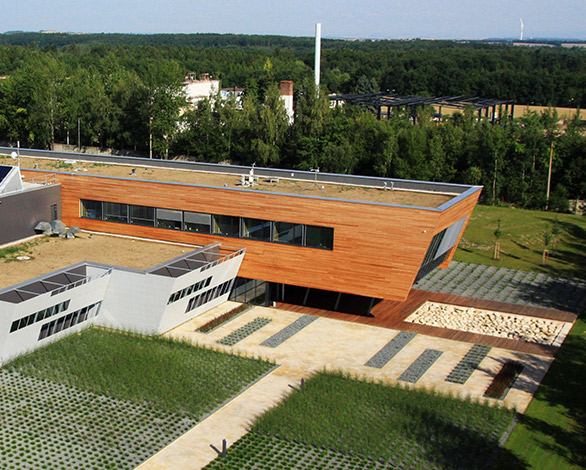
The Microbiological Laboratory and the Centre for Sustainable Building Construction, SUBSTANCE, are managed by the Department of Architectural Engineering, the Demonstration and Teaching Laboratory of Building Services is operated by the Department of Indoor Environmental and Building Services Engineering, and the Spatial Membrane Laboratory is available at the Department of Architecture. The operation of several laboratories is managed by the Department of Materials Engineering and Chemistry, including the Chemical Laboratory, the Laboratory for the Characterization of Materials and the Laboratory of Transport Processes. Furthermore, the Department runs the Laboratory for Determining Acoustical and Electrical Properties of Materials and the Ecotoxicological Laboratory. The Department of Geotechnics manages the Laboratories of Soil Mechanics and Geotechnical Monitoring serving also for research into the use of fibre optic technology. The Department of Concrete and Masonry Structures operates the Laboratory of Concrete Structures. The laboratories managed by the Department of Steel and Timber Structures and the Department of Road Structures correlate by their names with the names of the departments. The Department of Landscape Water Conservation supervises the activities of the Laboratory of Soil Physics and Isotope Hydrology. The Department of Sanitary and Ecological Engineering conducts research in the field of water environment quality in its Hydrochemical and Hydrobiological Laboratories. The Department of Construction Technology operates the Laboratory for Robotization of Structural Processes (robostav.cz), Technological Laboratory, Laboratory for 3D Printing and Laboratory of Non-Destructive Diagnostics of Buildings.
The Faculty also works in cooperation with the University Centre for Energy Efficient Buildings (UCEEB).
Numerous specialized laboratories used for both instruction and research cover a wide range of areas – from the nano level to full scale testing. The Faculty can boast of a prestigious workplace – the Testing Laboratory, which coordinates the activities of several professionally-oriented laboratories at the Faculty. Other renowned departments are the Experimental Centre, the Water Management Experimental Centre, the Centre of Experimental Geotechnics and the Josef Underground Laboratory. Many professional workplaces are also part of individual departments. The Centre of Nanotechnology in Civil Engineering is operated by the Departments of Mechanics, Physics and Building Structures, and the Laboratory of Scanning Electron Microscopy (SEM) is a joint laboratory of the Departments of Mechanics, Materials Engineering and Chemistry and the Experimental Centre. The Laboratory of Nanoindentation and Experimental Micromechanics of Materials also works at the Department of Mechanics.
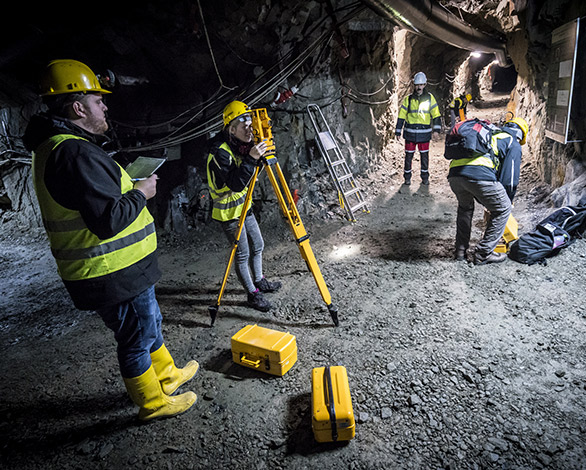
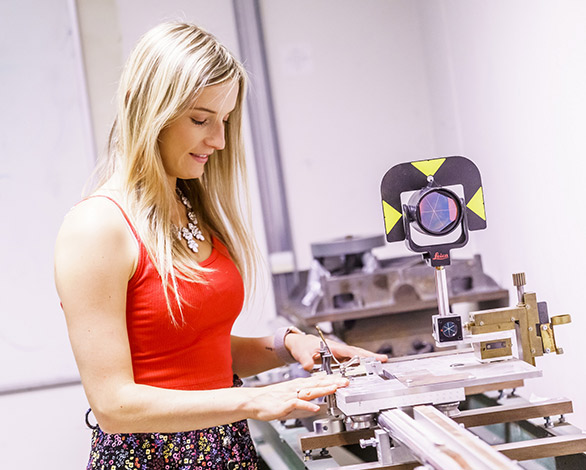
The Geodetic Laboratory of the Department of Geomatics is the largest laboratory in its field. It houses collections of surveying instruments, but, above all, unique equipment for the adjustment (instrument adjustment by means of a standard meter), testing and calibration of surveying instruments. It includes e.g. a goniometer, an optical precision bench tens of meters in length and a device for measuring micrometric displacements. The laboratory has a department of gravimetry, too.
The Faculty operates an astronomical observatory with a four-tonne astronomical dome, located on the roof of Building B. It was completely modernized last year. The observatory is used to teach geodetic astronomy and related courses, but it is also accessible to those interested in classical observational astronomy. The observatory can be fully remotely controlled, and the observations apply CCD cameras installed in the main telescope and in the telescope for observing the Sun.
In 2007–2008, the western atrium of Building D was roofed to create a modern, spacious, two-storey and highly variable classroom for the needs of individual studios of the Department of Architecture, the so-called Studio D. In addition to an open space, it also accommodates a Respirium (Quiet Zone), which was originally intended for self-study, but at the students’ request it was also adapted for drawing nudes as students in the study programme of Architecture and Building Sciences had showed interest in it. On the first floor, there are 4 suspended consultation boxes for teachers and students, two interconnected glazed classrooms with interactive technical equipment and the original staff room for teachers, which is more used as a meeting room now. There is also a modelling room and, next to it, a computer room available. Studio D has been newly connected to the adjacent Building H.
The unique space of Studio D impressing its visitors with its mobility and variability hosts not only classes, but also exhibitions of studio work, lectures delivered by prominent architects, workshops and the Summer School of Architecture and Building Engineering, as well as numerous leisure-time events, including student music parties and theatre performances.
In 2009, Studio D won the first prize in the category of interior design in the Grand Prix of Architects. The fact that its interior “acted” in a number of films and commercials also testifies to its photogenic looks.
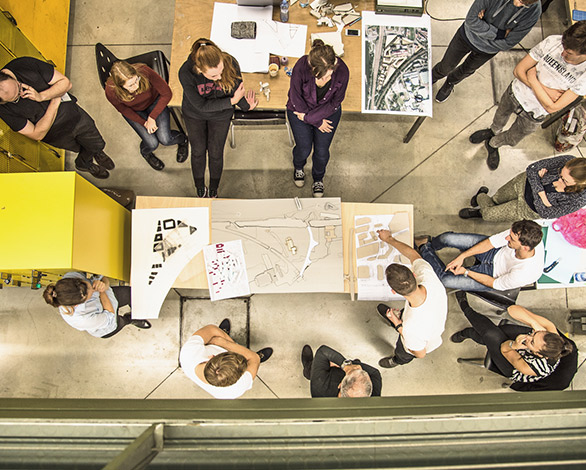
Two art rooms on the seventh floor of Building A are used mainly by students in the bachelor’s programme of Architecture and Building Sciences. They are equipped for the needs of teaching free drawing. In each room, there are 25 drawing tables with adjustable desks, 2 large-screen televisions for screening educational films and objects for still life arrangement – cubes, rectangular prisms, segments, chairs, draperies, mannequins for drawing, natural objects, etc. Instruction is always conducted by a team of two teachers comprising an architect and an artist. The Respirium (Quiet Zone) in Studio D has also been adapted for the needs of drawing, especially for drawing nudes.
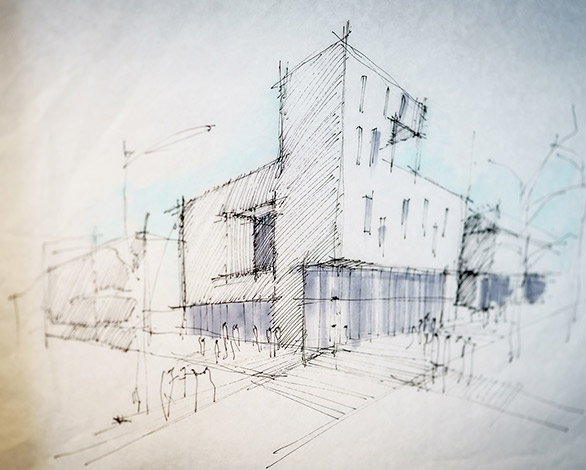
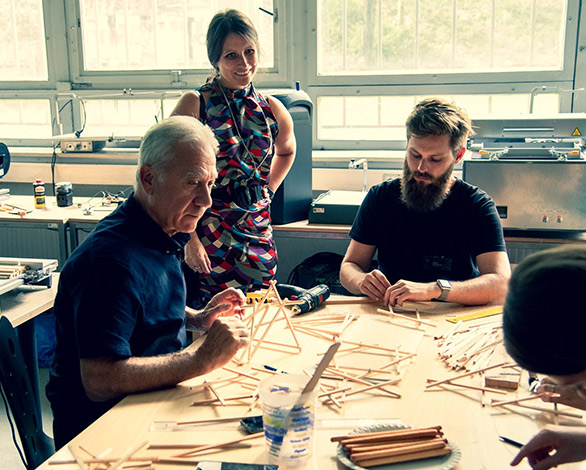
The modelling laboratory directly adjoining the open space classroom in Studio D caters primarily to students in the programme of Architecture and Building Sciences. The students can develop their working and final models and have all the necessary equipment readily available there, such as printing and cutting plotters, a laser plotter, 3D printers, a format saw, face disc grinders and polystyrene cutters. In the vicinity of the modelling laboratory, there are storage facilities and a shop selling modelling supplies.
Responsible: prof. Jiří Máca, dean
Address
Czech Technical University in Prague
Faculty of Civil Engineering
Thákurova 7/2077
166 29 Praha 6 – Dejvice
PR & Media
Czech Technical University in Prague
Faculty of Civil Engineering
Thákurova 7/2077
166 29 Praha 6 – Dejvice
To provide the best experiences, we and our partners use technologies like cookies to store and/or access device information. Consenting to these technologies will allow us and our partners to process personal data such as browsing behavior or unique IDs on this site and show (non-) personalized ads. Not consenting or withdrawing consent, may adversely affect certain features and functions.
Click below to consent to the above or make granular choices. Your choices will be applied to this site only. You can change your settings at any time, including withdrawing your consent, by using the toggles on the Cookie Policy, or by clicking on the manage consent button at the bottom of the screen.